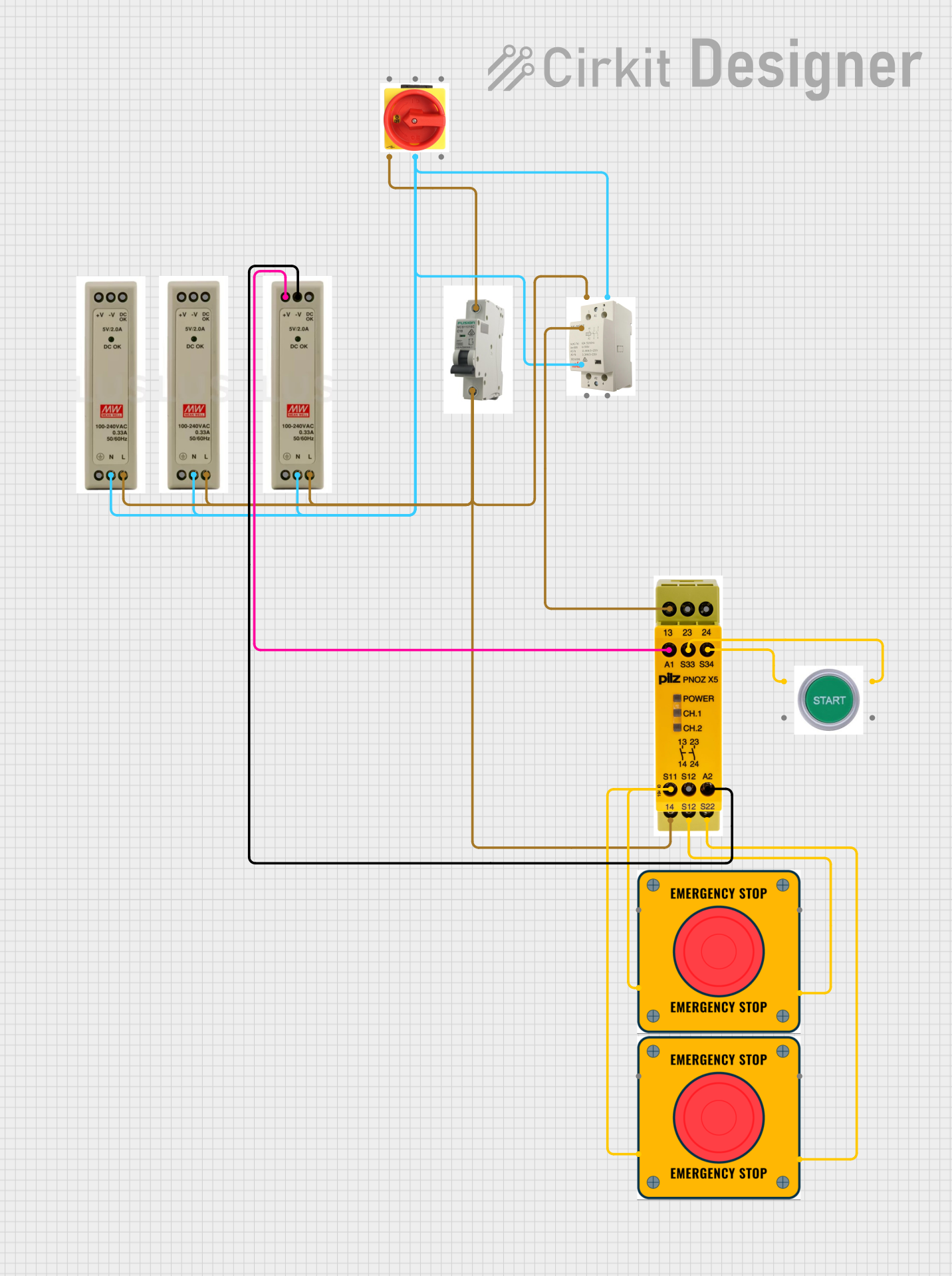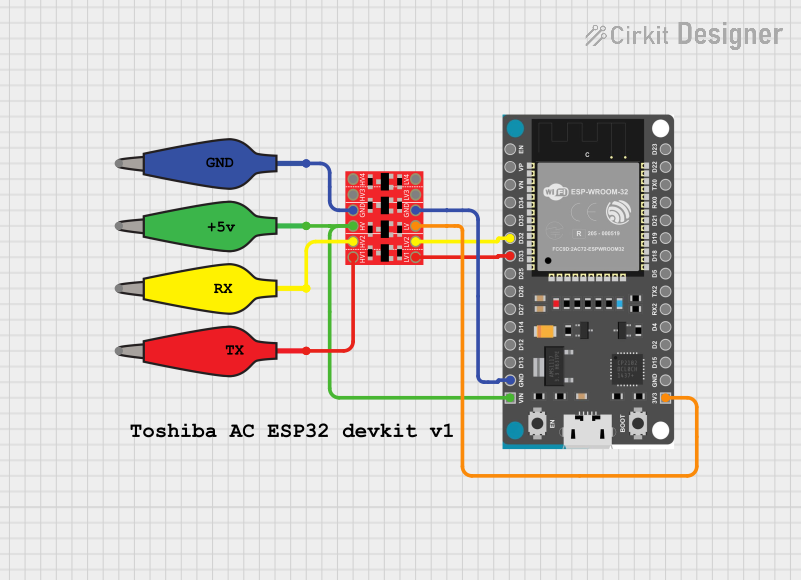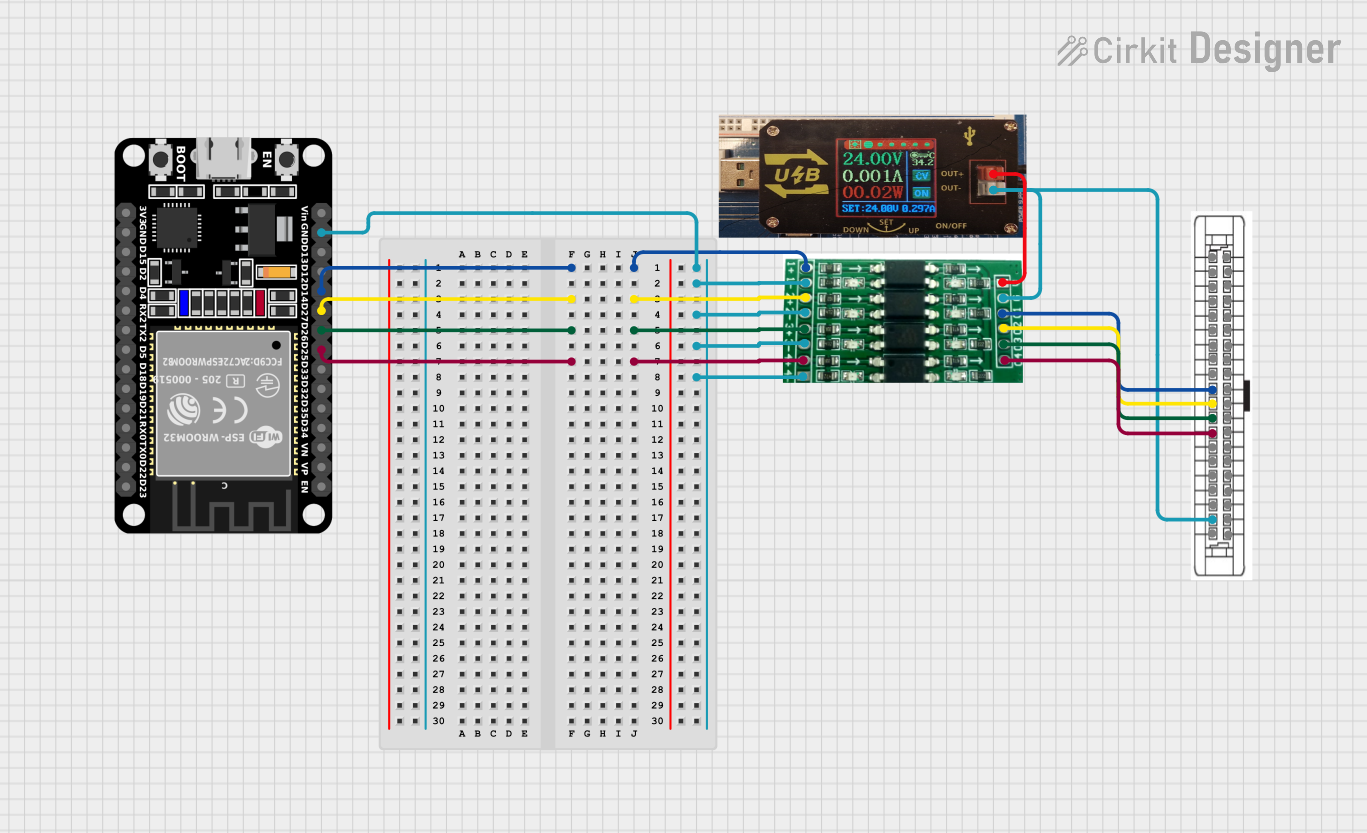
How to Use Basic EZO Inline Volta Isolator: Examples, Pinouts, and Specs

 Design with Basic EZO Inline Volta Isolator in Cirkit Designer
Design with Basic EZO Inline Volta Isolator in Cirkit DesignerIntroduction
The Basic EZO Inline Voltage Isolator (#BE-IVI) by Atlas Scientific is a compact and reliable device designed to prevent electrical backflow in circuits. It ensures that voltage levels remain stable, protecting sensitive components from potential damage caused by electrical noise or ground loops. This isolator is particularly useful in applications where precise voltage regulation and circuit protection are critical.
Explore Projects Built with Basic EZO Inline Volta Isolator

 Open Project in Cirkit Designer
Open Project in Cirkit Designer
 Open Project in Cirkit Designer
Open Project in Cirkit Designer
 Open Project in Cirkit Designer
Open Project in Cirkit Designer
 Open Project in Cirkit Designer
Open Project in Cirkit DesignerExplore Projects Built with Basic EZO Inline Volta Isolator

 Open Project in Cirkit Designer
Open Project in Cirkit Designer
 Open Project in Cirkit Designer
Open Project in Cirkit Designer
 Open Project in Cirkit Designer
Open Project in Cirkit Designer
 Open Project in Cirkit Designer
Open Project in Cirkit DesignerCommon Applications and Use Cases
- Preventing ground loops in sensor-based systems
- Protecting microcontrollers and other sensitive components from voltage spikes
- Ensuring stable voltage levels in industrial and laboratory equipment
- Isolating power supplies in multi-device setups
- Enhancing the reliability of data acquisition systems
Technical Specifications
The following table outlines the key technical details of the Basic EZO Inline Voltage Isolator:
| Parameter | Value |
|---|---|
| Manufacturer | Atlas Scientific |
| Part Number | #BE-IVI |
| Input Voltage Range | 3.3V to 5.5V |
| Output Voltage Range | 3.3V to 5.5V |
| Maximum Current | 100mA |
| Isolation Voltage | 2500V |
| Operating Temperature | -40°C to 85°C |
| Dimensions | 25mm x 15mm x 10mm |
| Weight | 5 grams |
Pin Configuration and Descriptions
The Basic EZO Inline Voltage Isolator has four pins, as described in the table below:
| Pin | Name | Description |
|---|---|---|
| 1 | VIN | Input voltage pin (3.3V to 5.5V). Connect to the power source. |
| 2 | GND | Ground pin. Connect to the ground of the input power source. |
| 3 | VOUT | Output voltage pin. Provides the isolated voltage to the connected circuit. |
| 4 | GND (Isolated) | Isolated ground pin. Connect to the ground of the isolated circuit. |
Usage Instructions
How to Use the Component in a Circuit
Connect the Input Side:
- Attach the VIN pin to the positive terminal of your power source (3.3V to 5.5V).
- Connect the GND pin to the ground of your power source.
Connect the Output Side:
- Use the VOUT pin to supply isolated voltage to your circuit.
- Connect the GND (Isolated) pin to the ground of the isolated circuit.
Verify Connections:
- Double-check all connections to ensure proper polarity and avoid short circuits.
Power On:
- Once all connections are secure, power on the circuit. The isolator will automatically regulate and isolate the voltage.
Important Considerations and Best Practices
- Ensure that the input voltage does not exceed the specified range (3.3V to 5.5V).
- Avoid connecting the input and output grounds directly, as this will defeat the purpose of isolation.
- Use proper decoupling capacitors on the input and output sides to minimize noise.
- If using the isolator with an Arduino UNO or similar microcontroller, ensure that the output voltage matches the microcontroller's operating voltage.
Example: Using the Isolator with an Arduino UNO
Below is an example of how to use the Basic EZO Inline Voltage Isolator to protect an Arduino UNO from ground loops when interfacing with a sensor:
Circuit Diagram
- Connect the sensor's power supply to the VIN and GND pins of the isolator.
- Connect the VOUT and GND (Isolated) pins to the Arduino's 5V and GND pins, respectively.
Sample Code
// Example code for reading sensor data with an Arduino UNO
// The Basic EZO Inline Voltage Isolator is used to prevent ground loops.
const int sensorPin = A0; // Analog pin connected to the sensor output
void setup() {
Serial.begin(9600); // Initialize serial communication
pinMode(sensorPin, INPUT); // Set the sensor pin as input
}
void loop() {
int sensorValue = analogRead(sensorPin); // Read the sensor value
float voltage = sensorValue * (5.0 / 1023.0); // Convert to voltage
Serial.print("Sensor Voltage: ");
Serial.println(voltage); // Print the voltage to the Serial Monitor
delay(1000); // Wait for 1 second before the next reading
}
Troubleshooting and FAQs
Common Issues and Solutions
No Output Voltage:
- Cause: Incorrect wiring or insufficient input voltage.
- Solution: Verify that the input voltage is within the specified range and check all connections.
Output Voltage Not Isolated:
- Cause: Input and output grounds are connected.
- Solution: Ensure that the input ground (GND) and isolated ground (GND (Isolated)) are not directly connected.
Excessive Noise in Output Voltage:
- Cause: Lack of decoupling capacitors.
- Solution: Add decoupling capacitors (e.g., 0.1µF and 10µF) near the input and output pins.
Overheating:
- Cause: Exceeding the maximum current rating.
- Solution: Ensure that the load connected to the output does not draw more than 100mA.
FAQs
Q1: Can the isolator be used with a 12V power supply?
A1: No, the input voltage range is limited to 3.3V to 5.5V. Using a 12V power supply will damage the isolator.
Q2: Is the isolator bidirectional?
A2: No, the isolator is designed for unidirectional voltage isolation. Ensure proper orientation of input and output connections.
Q3: Can I use the isolator with a Raspberry Pi?
A3: Yes, as long as the input and output voltages are within the specified range (3.3V to 5.5V).
Q4: What is the purpose of the isolated ground pin?
A4: The isolated ground pin ensures that the output circuit is electrically isolated from the input circuit, preventing ground loops and noise interference.